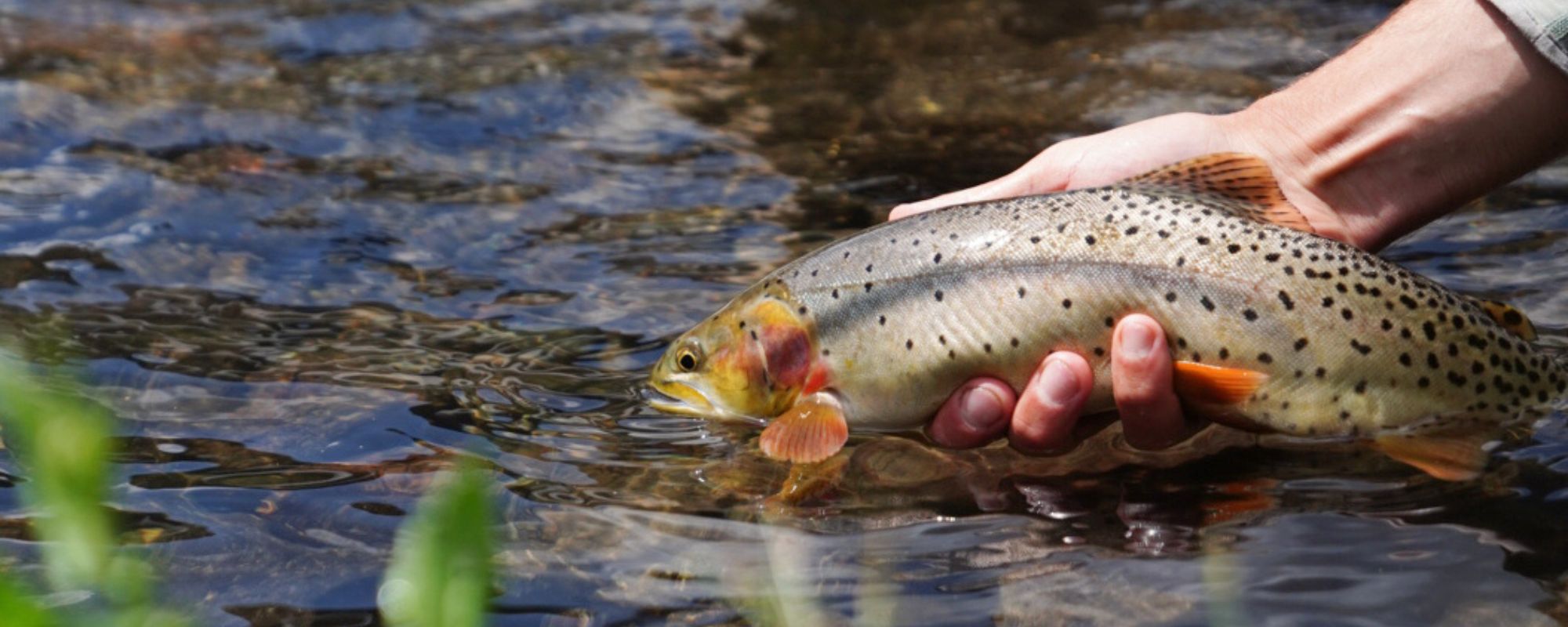
Fly Fishing Yellowstone National Park: Angler’s Paradise
Ask anyone to describe Montana’s natural beauty and you will certainly hear about fly fishing Yellowstone National Park. The oldest national park in the country and a cornerstone of our state, Yellowstone welcomes millions of visitors each year to experience once-in-a-lifetime scenery and wildlife. But YNP’s rivers and lakes beckon a particular group of outdoor recreationists to travel from states, and even countries, away. Anglers of all experience levels travel from afar to try their hand with fly fishing Yellowstone at nearly a dozen species of game fish that thrive in the park.
With over 250 miles of road, and plenty to explore off the beaten path, fly fishing Yellowstone National Park should be on everyone’s bucket list. Here are our tips for fly fishing Yellowstone on your own this year.
Where to go Fly Fishing in Yellowstone
Yellowstone National Park is home to several notable trout streams that can be organized into four corners of the park. These include the northwest, northeast, southwest and southeast sections. These sections are divided by several loop roads that make accessing different areas of the park much easier.
The northwest section of the park is accessed from either the west entrance in West Yellowstone or the north entrance of the park near Gardiner. Here the headwaters of the famed Madison, the Firehole and Gibbon Rivers, are found. Some of the most sought after times to fish these rivers are in the spring, where thermally-warmed waters are found among chilly conditions. Firehole River enthusiasts eagerly await the season opener in May to take advantage of this unique, early-season opportunity.
The northeast section of the park is home to several other famous streams that feed the Yellowstone River. From the north entrance in Gardiner, anglers can easily drive to stretches of the Yellowstone, Gardiner and Lamar Rivers. Slough Creek and Soda Butte Creek draw tons of anglers to the Lamar Valley every summer to chase yellowstone cutthroat and breathtaking views. A plethora of mayfly and caddis hatches, combined with awesome terrestrial fishing in late summer, keep anglers coming back year after year to explore this unique backcountry fishery.
In the southern half of the Park lies many household Yellowstone attractions, including Old Faithful, Yellowstone Lake and many beautiful waterfalls. Additionally, the southwest corner of the Park is home to several remote, less-traveled, fly fishing destinations. These include the Bechler River and Lewis River, as well as Heart Lake, Shoshone Lake and the West Thumb of Yellowstone Lake. Some trophy brown, rainbow and cutthroat trout can be found in this area. If remote fishing is what you’re looking for, don’t shy away from making the beautiful drive down here.
Finally, the southeast corner of Yellowstone is home to the famed Snake river and Yellowstone Lake. If you’re looking for yellowstone cutthroat in a remote wilderness setting, don’t shy away from hiking into the Snake River. Yellowstone Lake is also home to giant, native yellowstone cutthroat. In the spring, these big cruising fish can be caught in the shallows from shore with streamers or nymphs.
When to Fish
Yellowstone National Park opens to fishing on the Saturday of Memorial Day weekend (typically the end of May) and ends the first week of November. Understanding the different types of water and seasonality is crucial in exploring and fishing this vast wilderness. Our runoff season, typically from May through the end of June, renders many rivers unfishable. Hitting YNP’s rivers prior to this runoff event can be difficult to time, but can lead to excellent pre-runoff fishing. This includes hatches like skwala stoneflies, march browns, caddis and BWOs. But because the season opener for Yellowstone occurs so close to our runoff season, it can be safer to plan to fish these waters after runoff or shoot for the lakes during ice-off. Runoff typically has tapered down in Yellowstone National Park by the first week in July. We then see ample numbers of summer stonefly hatches, including salmonflies, as well as PMD’s and caddis.
The lakes in and surrounding Yellowstone National Park offer awesome opportunities for anglers looking to try their hand at big, wild trout. The ice starts receding on many of the Park’s lakes in May. Many stillwater anglers will take advantage of this opportunity to fish crawfish or sculpin to hungry, pre-spawn fish. In addition to Yellowstone Lake, the notorious “gulpers” at Hebgen Lake test dry fly enthusiasts on long leaders and small callibaetis. Check out the Madison Arm of Hebgen Lake for a stillwater experience that you’ll remember for years to come.
Bring the Right Gear
The oftentimes adverse conditions in Yellowstone National Park demand the right gear to keep yourself comfortable, as well as increase your chances of success. Quality waders are crucial for fly fishing Yellowstone in the shoulder seasons — spring and fall. Because there are so many backcountry destinations in the park, gearing up with durable yet lightweight gear is crucial. We wear Simms guard socks and rubber wading boots to abide by the “no felt” rule in Yellowstone. The new Simms Flyweight Access boot is the perfect boot for your Yellowstone fly fishing trip, with a versatile and grippy vibram sole. A fast-action 5 or 6 wt. fly fishing rod is a perfect rod to cover the majority of fly fishing in Yellowstone. However, light 3 or 4 wt. rods are a great option for smaller streams with native trout. Some of our favorites are the Echo River Glass rods for light presentation and rod-bending fun on small streams.
Fly choice depends on the time of year. With hatches ranging from size 4 salmonflies to size 18 ants, make sure to consult a local Montana fly shop before you make the trip down there. Visit our online fly shop to browse dozens of patterns or give our Missoula fly shop a call. Finally, make sure to be prepared and check regulations before you visit Yellowstone National Park. Bear spray and other protective measures should be taken when fishing in the backcountry and can be purchased at local shops, like ours, in and around the Park. A Yellowstone National Park fishing license is also required, and can be easily purchased online or in a local fly shop. Visit the Montana Fish, Wildlife and Parks website or the YNP website for more information.
If it isn’t on your list already, a trip to go fly fishing Yellowstone National Park should be on the horizon for any fly angler. The breathtaking scenery, wildlife, and miles of trout-filled water will leave you yearning for another wild fly-fishing adventure.
Have questions about fly fishing Yellowstone National Park or fly fishing in Missoula? Our expert Missoula fly fishing guide staff in our Montana fly shop is happy to help!
SHOP OUR ONLINE FLY SHOP
SHOP
WITH US
| Shop Online
Fish
WITH US
| Guided Fly Fishing Trips
stay
WITH US
| Lodging Packages
OUR NEWSLETTER
Sign Up For Our Newsletter & Receive 10% OFF Your Next Order
Join our mailing list for expert information on fly fishing, deals and discounts, and more information from our Missoula fly shop!

